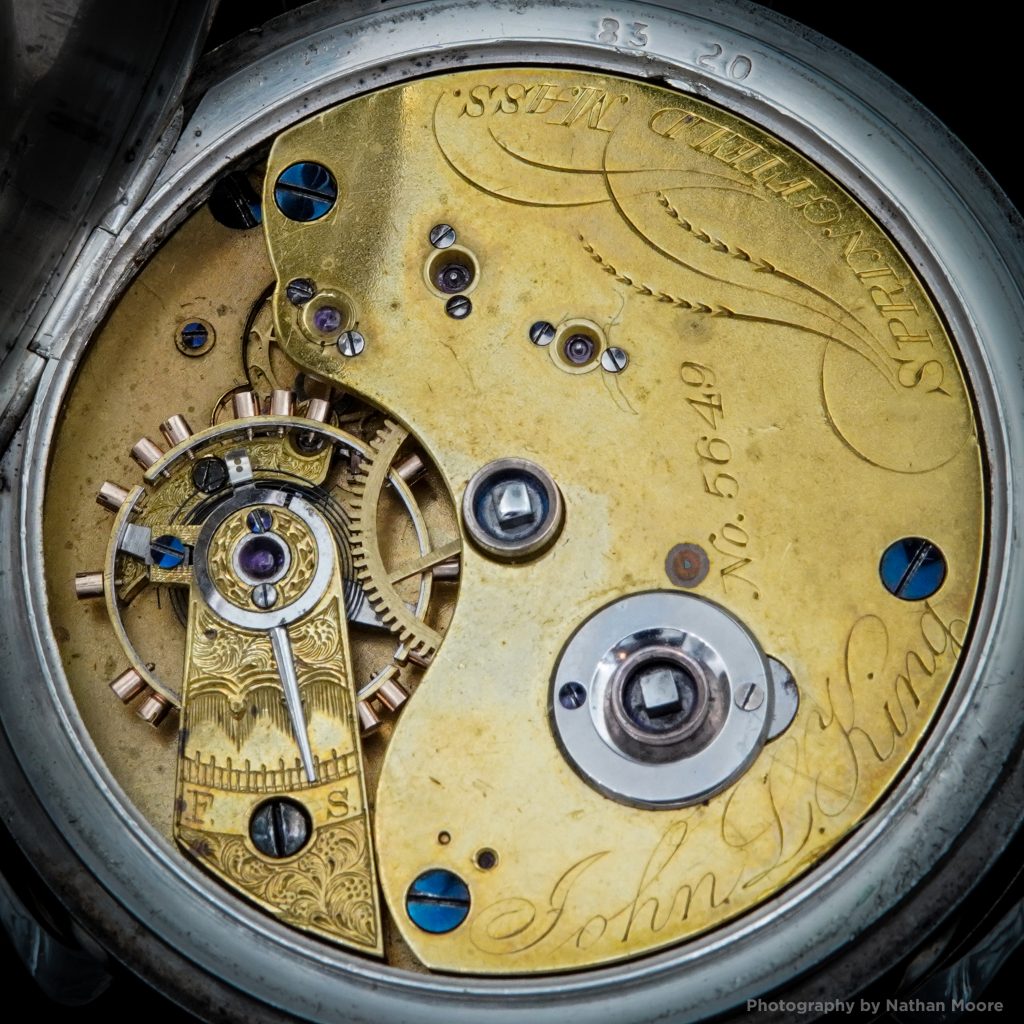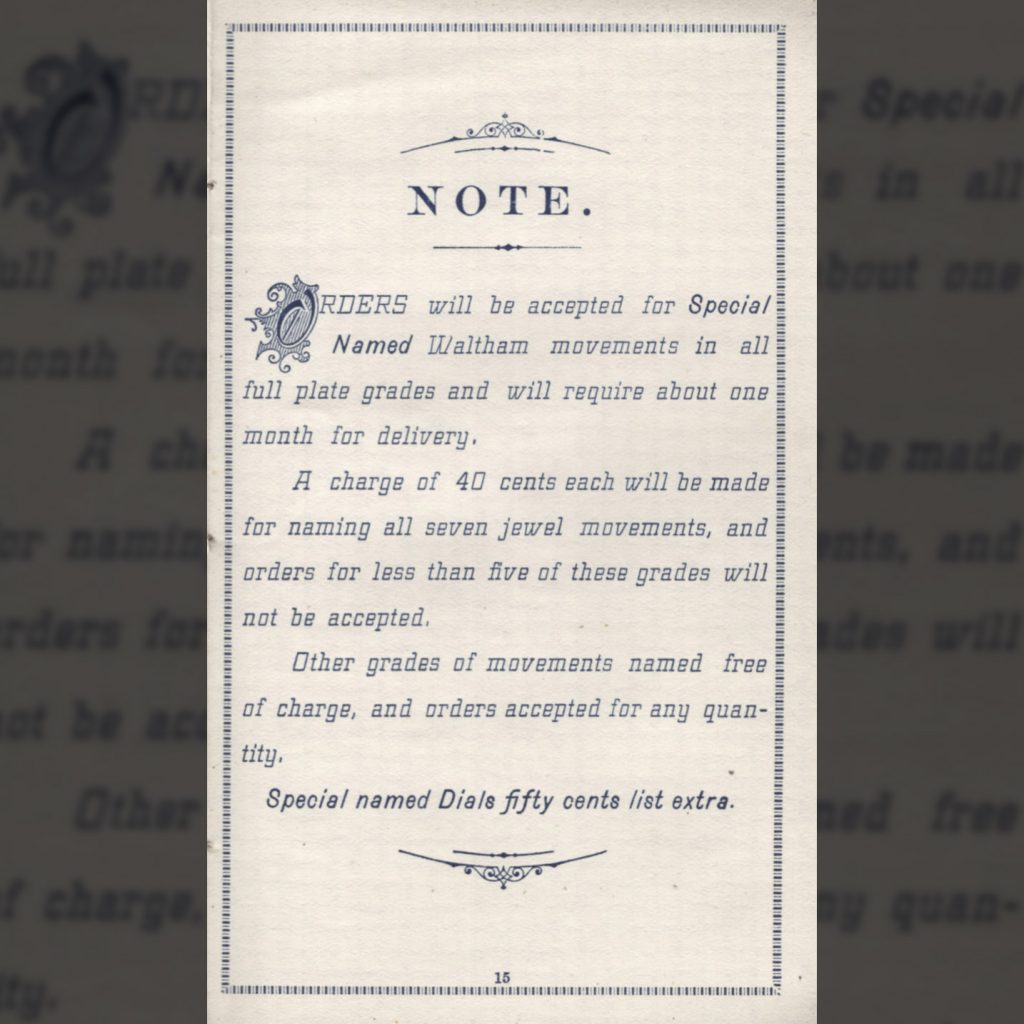The Waltham “Crescent Street” Movement: The Model 1870: Key-Set From the Back

When the “Crescent Street” movement first debuted, it included several new features designed to quickly capture the growing railroad market. These features were detailed in advertisements published by Robbins & Appleton, general sales agents for the American Watch Company (Waltham).

In addition to the new micrometric regulator and a patented ratchet click, the Model 1870 was the first standard full-plate American movement equipped with a hand-setting mechanism from the back. The 18-Size full-plate key-set movements on the market at the time were all set using the key arbor in the center of the hands dial-side.
Most 3/4-Plate key-set movements in production at the time were designed to be set from the back using the arbor on the center wheel. However, the balance cock on full-plate movements obscured the center wheel, forcing an alternative method. The Model 1870 introduced ingenuity to this accepted convention, implementing an offset intermediate wheel that would allow for key setting from the back.

Exhibiting Back-Setting Arbor on the Center Wheel
Waltham understood the benefits of this mechanism over the front-setting alternative. First, setting the watch from the back was much easier and more efficient than clumsily fiddling to set the hands using the tiny key arbor in the middle of the hands. Anyone who has attempted to set a key-set watch from the front understands the challenge of maintaining optimal pressure at a specific angle while attempting to rotate the key to set the time. Additionally, this process operates at a 1:1 ratio, so the key must make a full rotation for every hour that needs to be passed to set the time. Provisioning an extended key arbor at the back with a guard provides an easier and less frustrating interface to set the watch.

The key arbor was paired with an intermediate setting wheel under the dial to engage the wheels driving the hands. This wheel also features a 1:3.6 ratio, providing the ability to set the hands quickly and efficiently. This was a pleasant upgrade from the 18-Size Model 1857 that dominated Waltham production in the 1860s.

The other benefit of the device was to reduce the frequency of exposure to the delicate hands while the watch was being set. The thin steel hands were often bent or broken if the owner was careless while setting the watch. Moving the setting mechanism to the back of the watch prevented the dial and hands from being damaged.
The back-setting feature remained in production until 1871. At that time, the company aimed to revise the design as stem-wind watches were rising in popularity. Waltham transitioned the Model 1870 to a stem-wind system and experimented with a variety of setting mechanisms to replace the key-set arrangement.
Before the Model 1870 was introduced, the American Watch Company also had limited experience with a back-setting mechanism on a full-plate movement during the short-lived production of the Chronodrometer Sporting Timer in the late 1850s. However, the primary function of the Chronodrometer was to serve as a horse timer, so the general timekeeping feature was secondary. Nevertheless, this experience likely influenced the implementation of the offset key arbor seen on the Model 1870.


It is interesting to note that historical references describing the first production prototype at the National Watch Company (Elgin) in 1867 suggest that the watch featured a similar setup: “In one of these was made the first watch ever built in Elgin. It was an 18-Size (English) full plate, key-wind, with quick train and straight line escapement, arranged to set the hands at the back, as was common with three-quarter plate, English and key-wind watches of that day… This model was not adopted, but was changed to set on the face after the plan of full plate movements of that day…” [The Keystone, August 1890].




Outstanding information…. Thank you!